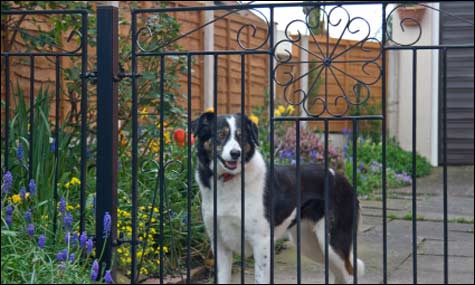The most persistent disconnect that I have encountered in 30 years of veterinary practice is the owner perception that if they have a fenced, large backyard, then their dog is active. I have lost count of the number of veterinary exams that feel like the movie Groundhog Day, where I live the same scene over and over.
For example: I am in an exam room and an overweight dog is lying on the floor in the exam room and hasn’t moved in the first 10 minutes of the history-taking portion of my exam process. When I finally do get to the issue of weight and exercise information the owner insists that this immobile lump of canine at my feet is an unbelievable athlete when it is alone in the backyard.
As I try to elicit some voluntary movement from my patient that would help me perform my physical exam, the owner rambles on about how this dog is a perpetual motion machine in the backyard. I finish my exam in a pant due to efforts to move my patient. Attempts to convince the owner that this pet is not fit and really needs more exercise are unsuccessful. I complete the needs of the appointment and eagerly enter the next room for my next exam and encounter another immobile lump of canine athlete that also lives in a house with a big backyard.
A big backyard does not equal an active dog, yet the belief persists. Why?
Dr. Ernie Ward, in his book Chow Hounds, examined this misconception. He notes that when they are initially put out in the backyard, dogs naturally run the perimeter of the yard to ensure the family “pack” borders have not been breached by intruders. The owner sees this as they turn and close the door to return inside and leave the dog to exercise. Finally when the owner opens the door, the dog is at full steam returning to the owner. As Dr. Ward writes about the owner response (“Wow, that dog never slows down!”) without realizing that the dog did nothing but lay around the yard during its entire time alone.
Other researchers have confirmed that pet dogs and wild dogs spend most of their time resting. For wild dogs it is a way of conserving energy between scarce meals. The behavior has not changed with domestication. A study in 1992 confirmed that solitary dogs rest 80 percent of their alone time, while multiple dogs rest 60 percent of the time. Dogs, like humans, need a reason to exercise. Although multiple dogs in a confined yard may play more than the solitary dog, owners still overestimate the amount of their activity.
If it wasn’t measured, it didn’t happen.
Dogs are pack animals and if the human members of the pack provide company and a reason to exercise, they will. Walking, fetching, swimming with the family (or as a family member watches), agility courses, etc., will motivate dogs to move. Time is measurable.
Time alone, however, is not the only component of productive exercise that burns calories. Dr. Ward notes that a stroll with a dog, although a great social event between dog and owner, is inadequate to burn meaningful calories. Dr. Ward researched data from NASA and other studies on exercise in dogs that indicate that a pace of 4-4.7 miles an hour, or 14-15 minute miles, are necessary for meaningful cardiovascular effects and caloric burn. Owners who are unable to walk at this pace will need to substitute fetching, agility, or swimming activities that are more cardiovascular intense. Ideally these strategies should be a daily event for at least an hour.

The following post is from by Dr. Ken Tudor
For more blog posts please visit https://www.theluckypup.com/blog/
Loving Care You Can Trust!




Anisha
A provocative insight! Just what we need!